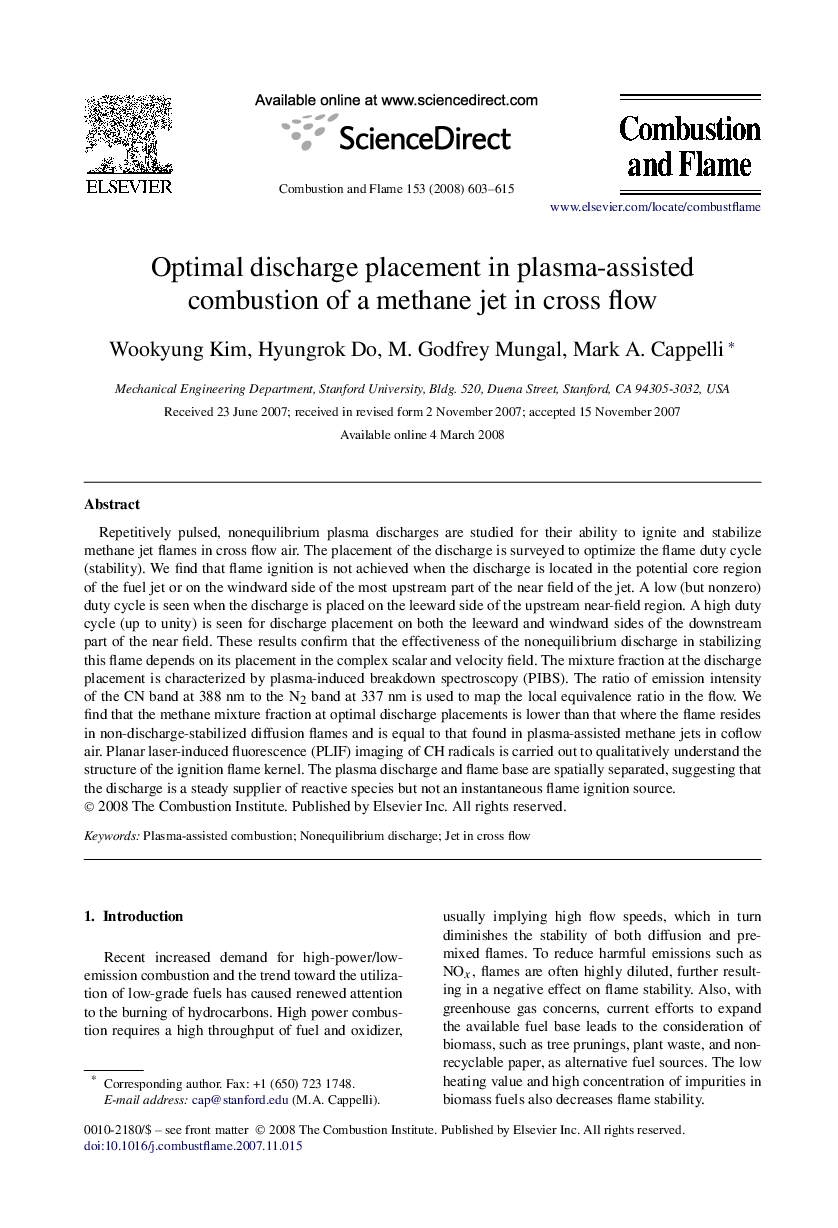| Article ID | Journal | Published Year | Pages | File Type |
|---|---|---|---|---|
| 167945 | Combustion and Flame | 2008 | 13 Pages |
Repetitively pulsed, nonequilibrium plasma discharges are studied for their ability to ignite and stabilize methane jet flames in cross flow air. The placement of the discharge is surveyed to optimize the flame duty cycle (stability). We find that flame ignition is not achieved when the discharge is located in the potential core region of the fuel jet or on the windward side of the most upstream part of the near field of the jet. A low (but nonzero) duty cycle is seen when the discharge is placed on the leeward side of the upstream near-field region. A high duty cycle (up to unity) is seen for discharge placement on both the leeward and windward sides of the downstream part of the near field. These results confirm that the effectiveness of the nonequilibrium discharge in stabilizing this flame depends on its placement in the complex scalar and velocity field. The mixture fraction at the discharge placement is characterized by plasma-induced breakdown spectroscopy (PIBS). The ratio of emission intensity of the CN band at 388 nm to the N2 band at 337 nm is used to map the local equivalence ratio in the flow. We find that the methane mixture fraction at optimal discharge placements is lower than that where the flame resides in non-discharge-stabilized diffusion flames and is equal to that found in plasma-assisted methane jets in coflow air. Planar laser-induced fluorescence (PLIF) imaging of CH radicals is carried out to qualitatively understand the structure of the ignition flame kernel. The plasma discharge and flame base are spatially separated, suggesting that the discharge is a steady supplier of reactive species but not an instantaneous flame ignition source.
